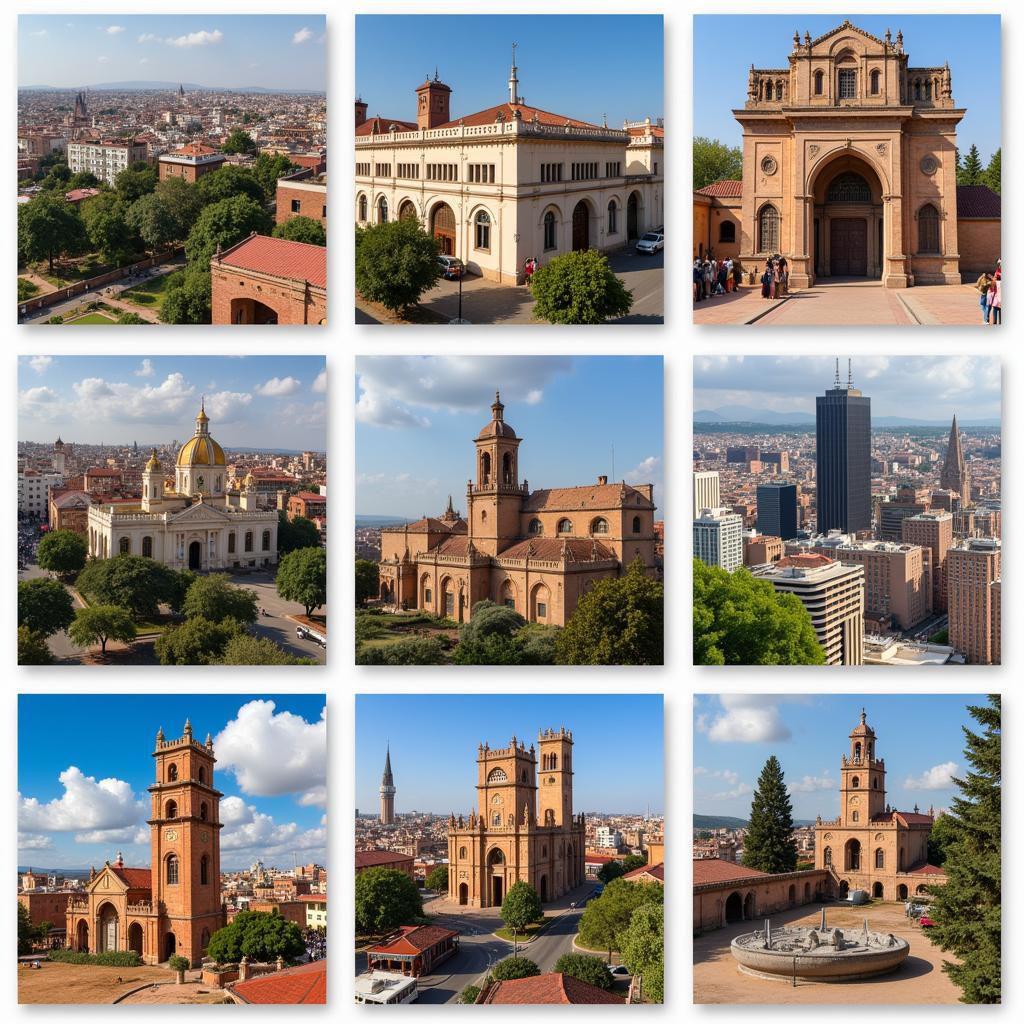Exploring the Vibrant World of African Bag Art
African Bag Art is more than just a functional accessory; it’s a vibrant expression of culture, history, and artistry. From intricate beadwork to bold woven patterns, these bags tell stories, represent traditions, and showcase the diverse talents of artisans across the African continent. These unique pieces are not only fashionable but also serve as a powerful reminder of the rich heritage and creativity found within Africa. After reading this, you might be inspired to purchase an authentic piece from an African clothing boutique.
The artistry of African bags is deeply rooted in the continent’s diverse cultures. Each region, tribe, and community boasts its own distinctive style, employing various techniques and materials. This results in a breathtaking array of bags, each with its own unique story to tell. Whether it’s the intricate beadwork of the Maasai, the colorful woven designs of Ghana, or the elaborately embroidered leather bags of Morocco, African bag art reflects the rich tapestry of the continent’s heritage. You might even find similarities in the craftsmanship of some African American vintage dolls.
The Materials and Techniques Behind African Bag Art
What makes African bag art so captivating? It’s the skillful combination of traditional techniques and locally sourced materials. Natural fibers like raffia, sisal, and jute are expertly woven into durable and aesthetically pleasing designs. Leather, often adorned with intricate embroidery or embossed patterns, adds a touch of sophistication. Beads, in a myriad of colors and sizes, are meticulously sewn onto fabric or leather, creating stunning geometric patterns or figurative representations. Even recycled materials find new life in the hands of innovative artisans, transforming discarded plastic bags and metal scraps into unique and eco-friendly works of art.
From Everyday Use to Fashion Statements: The Versatility of African Bags
African bags are not mere accessories; they are integral to daily life. Traditional bags, often large and sturdy, are used for carrying everything from market goods to household items. Smaller, more ornate bags serve as stylish accessories for special occasions, reflecting the wearer’s social status and cultural identity. Today, African bag art has transcended its traditional roots and become a global fashion statement. Designers are incorporating African-inspired patterns and techniques into their collections, bringing the vibrant spirit of African art to a wider audience. Want to visit the continent? Check out African countries with visa on arrival.
Unveiling the Cultural Significance of African Bag Art
Beyond their practical and aesthetic value, African bags hold deep cultural significance. They often represent social status, family lineage, or spiritual beliefs. Certain patterns and symbols carry specific meanings, conveying messages of prosperity, fertility, or protection. For example, the intricate beadwork of the Maasai communicates age, marital status, and social standing within the community. These bags are not just objects; they are tangible expressions of cultural identity, passed down through generations. Consider this beautiful art when searching for an African kaftan dress.
Supporting African Artisans and Sustainable Practices
By purchasing African bag art, you are not only acquiring a unique and beautiful piece but also supporting the livelihoods of talented artisans and promoting sustainable practices. Many African bag makers use traditional techniques and locally sourced materials, contributing to the preservation of cultural heritage and environmental conservation. Supporting fair trade practices ensures that artisans receive fair compensation for their work, empowering them to continue their craft and contribute to their communities. African countries sugarcane industries demonstrate the importance of sustainable practices.
In conclusion, African bag art is a testament to the continent’s rich cultural heritage and artistic ingenuity. From the vibrant colors and intricate designs to the sustainable practices and cultural significance, these bags offer a glimpse into the heart and soul of Africa. By appreciating and supporting African bag art, we can help preserve this valuable tradition and empower the talented artisans who keep it alive.
FAQ:
-
What materials are commonly used in African bag art?
Common materials include raffia, sisal, jute, leather, beads, and recycled materials. -
What are some common techniques used in African bag making?
Common techniques include weaving, beading, embroidery, and leatherwork. -
What is the cultural significance of African bags?
African bags often represent social status, family lineage, or spiritual beliefs. -
How can I support African artisans?
Support African artisans by purchasing fair trade products and promoting their work. -
Where can I find authentic African bag art?
You can often find authentic pieces at an African clothing boutique.
Common Scenarios and Questions:
Scenario: You are looking for a unique and ethical gift.
Question: Where can I find handcrafted African bags that support fair trade?
Scenario: You are interested in learning more about African culture.
Question: What do the different symbols and patterns on African bags represent?
Further Exploration:
Learn more about other aspects of African art and culture by exploring related articles on our website. You can also find information about African American vintage dolls and African countries sugarcane industries.
Need Assistance? Contact us at Phone: +255768904061, Email: kaka.mag@gmail.com or visit us at Mbarali DC Mawindi, Kangaga, Tanzania. Our customer service team is available 24/7.



